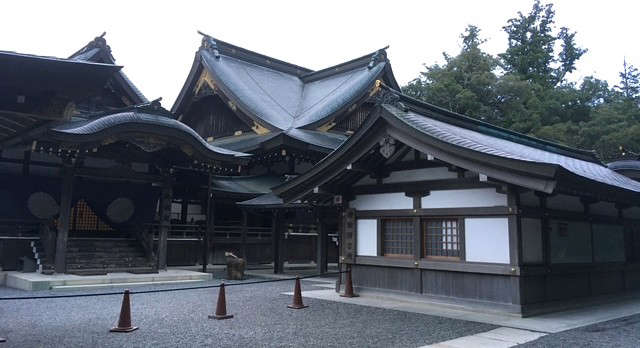
During the COVID-19 pandemic, Japan completely shut down, not allowing any foreign tourists in or out of the country.
This hit the tourist industry very hard, so the government started a program that allowed domestic residents to take advantage of cheaper train costs and hotels to try to make up for the fact that foreign tourists were not allowed to come to Japan.
I did a lot of domestic traveling around Japan during the pandemic, taking advantage of the cheaper travel and hotel costs. I wanted to visit out of the way places that I normally wouldn’t go to, but that were still on my Japan-travel bucket list of places to see.
So, continuing the theme of introducing some of my favorite places around Japan, outside of metropolitan Tokyo and Osaka, today’s special place is in Mie Prefecture where one of the most sacred and holiest of Shinto shrines is located.
Mie Prefecture is uniquely situated between both the Tokai and Kansai areas, on the main island of Honshu. It straddles both regions but perhaps leans closer to the Kansai area geographically but is more closely aligned economically and culturally to the Tokai region.
Rich in natural beauty and history, Mie boasts large swaths of protected nature reserves and has over 1,000 kilometers of Pacific Ocean coastline.
The main attraction in Mie, however, is the Ise Grand Shrine in Ise (main photo), which is in a complex of Shinto shrines within the Ise-Shima National Park.
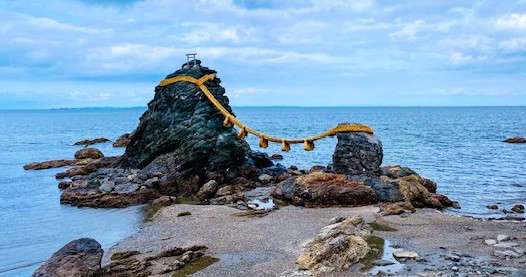
The park is on the Shima Peninsula and is home to the Meoto Iwa, or wedded rocks. This rock formation features two sacred rocks that are connected with a ceremonial rope on the rocky coastline (photo).
The reason why the Ise Grand Shrine is considered to be the most sacred shrine in Japan is because it is dedicated to the sun goddess, Amaterasu, who is regarded as the ancestral kami (Shinto god) of the Imperial family. More than 1,500 rituals are performed here every year, primarily to pray for the health and welfare of the Imperial family and for world peace, along with productive harvests to supply food for Japan.

Around 2,000 years ago, during the reign of the 10th Emperor Sujin, the Holy Mirror (the primary symbol of Amaterasu) was moved from the Imperial grounds of the palace. It was decided that a permanent place should be found for the Sun Goddess, so it was during the reign of the 11th emperor, Suinin, that he commanded his princess, Yamatohime-no-mikoto, to find the most suitable location to enshrine and worship Amaterasu. Many varied regions were searched and considered all over Japan, but the princess received a premonition that the best location was in Ise, so that is where Amaterasu is enshrined for eternity.
When I visited the shrine, I was surprised by how plain it was. Some Shinto shrines in Japan can be very ornate and fancy, but the Ise Grand Shrine looks very ordinary and not the grandiose structure I had imagined in my mind, considering it enshrines the Sun Goddess.

We were not allowed to enter into the inner sanctuary of the shrine complex, but all the pilgrims gathered outside to pray in the vicinity of the shrine. The Holy Mirror of Amaterasu is housed inside the shrine (photo) in the innermost courtyard of the main sanctuary.
The entire grounds of the Grand Shrine are lovely and beautiful and well worth strolling through slowly and deliberately. One can definitely feel the holiness, sacredness and spiritual energy of the grounds as one strolls among the tall, ancient trees.

Another cultural aspect of the grounds is the Ujibashi Bridge (photo, above and below) that stretches across the Isuzugawa River, and is believed to separate the sacred realm of the shrine complex from the trappings of daily life found on the other side.
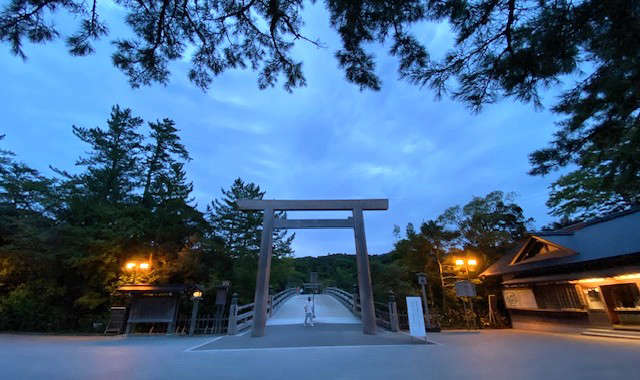
I read that the bridge is rebuilt every 20 years as a part of the Shikinen Sengu, or periodic transfer of the divine symbol to a divine palace that is also newly constructed every 20 years. This traditional design of the bridge represents a very typical architectural style of Japan. The bridge spans over 100 meters.
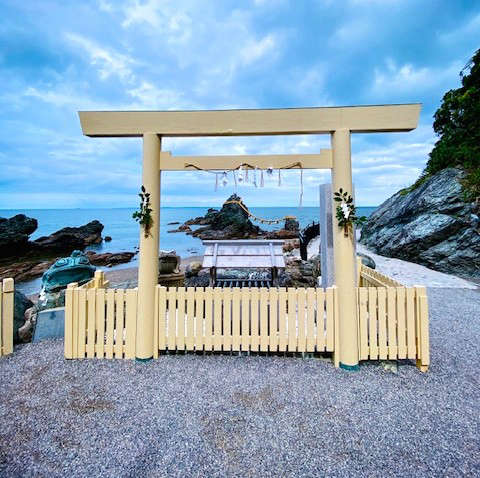
The wedded rocks (photo), mentioned earlier in this column, represent married couples and is religiously important in Shintoism. These rocks are said to represent the marriage of the two Shinto kami, Izanagi and Izanami, which in turn symbolize the holy union of marriage between men and women. This rock formation in Mie Prefecture is perhaps the most famous representation of marriage rocks in Japan.
Located on the coast at Futami Okitama Shrine, the rocks are connected by a sacred shimenawa (a handwoven, heavy rope made of rice straw). The rope must be replaced several times a year in a special ceremony conducted by Shinto priests.
The larger of the two main rocks is said to represent the husband in the marriage, and the smaller one, represents the wife. A small torii (gate) sits atop the male representation of the marriage. In the summer, the sun rises between the two rocks and on a really clear day, Mount Fuji can be seen in the far distance. During high tide, the rocks appear to be separated by water, but during low tide they are obviously connected by rock formations.
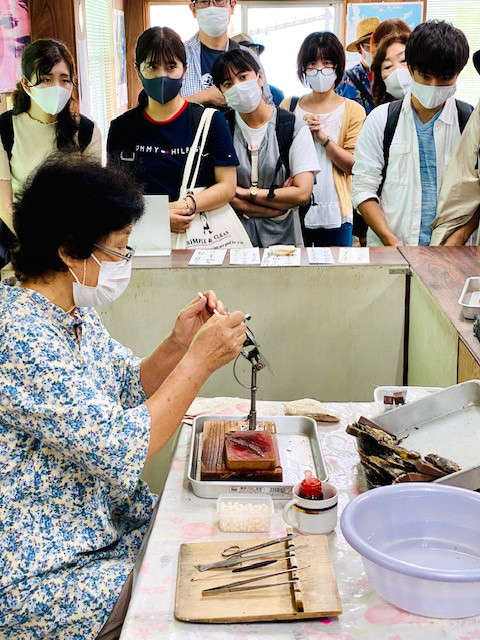
Another interesting activity while in Mie is “pearl harvesting” where you can harvest your own pearls (photo). Decidedly more touristy than the more historical and traditional aspects of visiting Mie, it can be an interesting activity if you are into that sort of thing. In addition, it is claimed that Mie is the birthplace of Ninjas.
If you are interested in hiking in nature, climbing mountains, and enjoying natural beauty, then Mie may be the place for you. It offers something for everyone and for a history buff who loves religious history like me, it was well worth visiting.
In fact, Mie’s rich spiritual history is perhaps its greatest charm.


 Greenfield PD looking for reported runaway who should be considered armed and dangerous
Greenfield PD looking for reported runaway who should be considered armed and dangerous
 Indiana Department of Workforce Development releases September employment report
Indiana Department of Workforce Development releases September employment report
 Governor Braun takes action to waive hours-of-service regulations for transporting propane
Governor Braun takes action to waive hours-of-service regulations for transporting propane
 Two Indiana State Fair Commission executives elected to prominent national IAFE Positions, Indiana State Fair honored with multiple awards
Two Indiana State Fair Commission executives elected to prominent national IAFE Positions, Indiana State Fair honored with multiple awards
 Letters Home: Kitakyushu, a charming castle town
Letters Home: Kitakyushu, a charming castle town
 Cover Crop Premium Discount Program available for Hoosier farmers, new pre-enrollment available
Cover Crop Premium Discount Program available for Hoosier farmers, new pre-enrollment available
 Indiana FSSA extends open enrollment for HIP and PathWays Plans through December 24
Indiana FSSA extends open enrollment for HIP and PathWays Plans through December 24
 SHS presents Lighted Holiday Forest at Ecology Lab
SHS presents Lighted Holiday Forest at Ecology Lab




